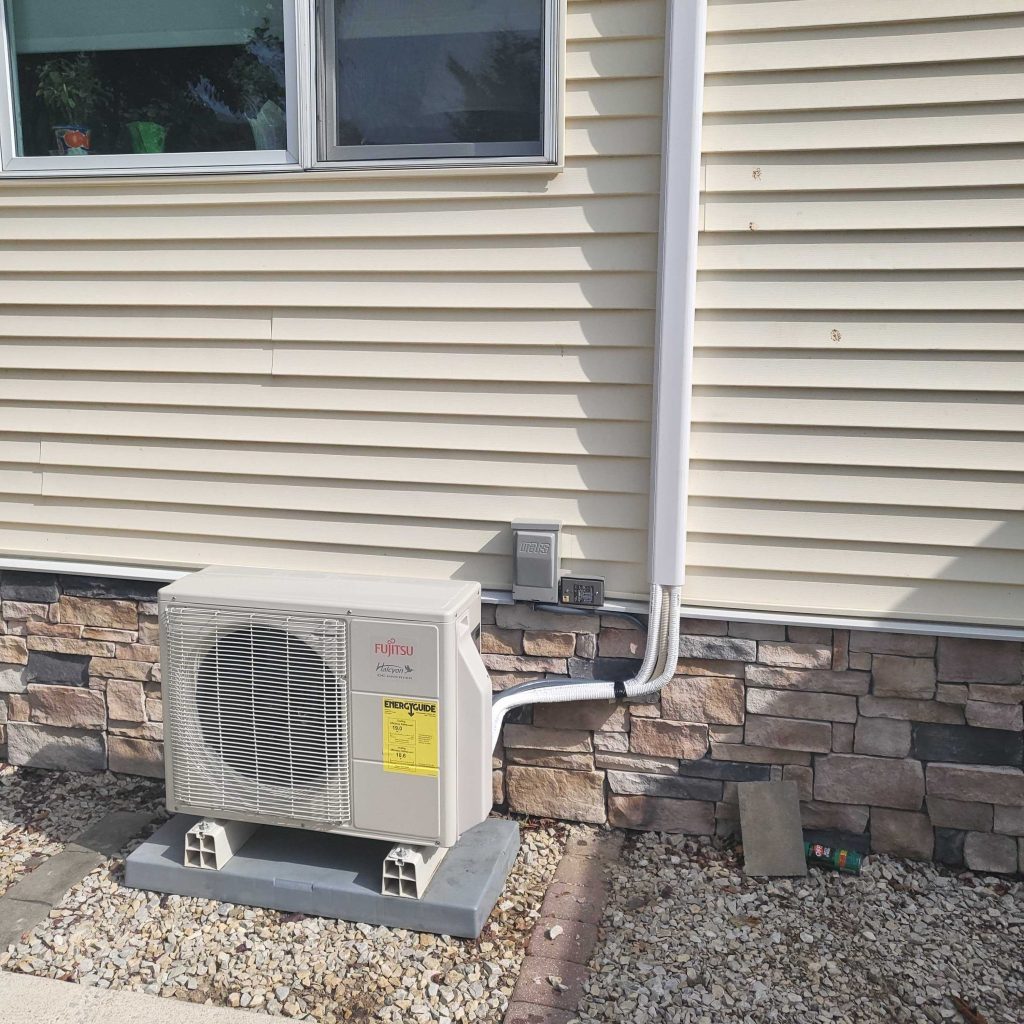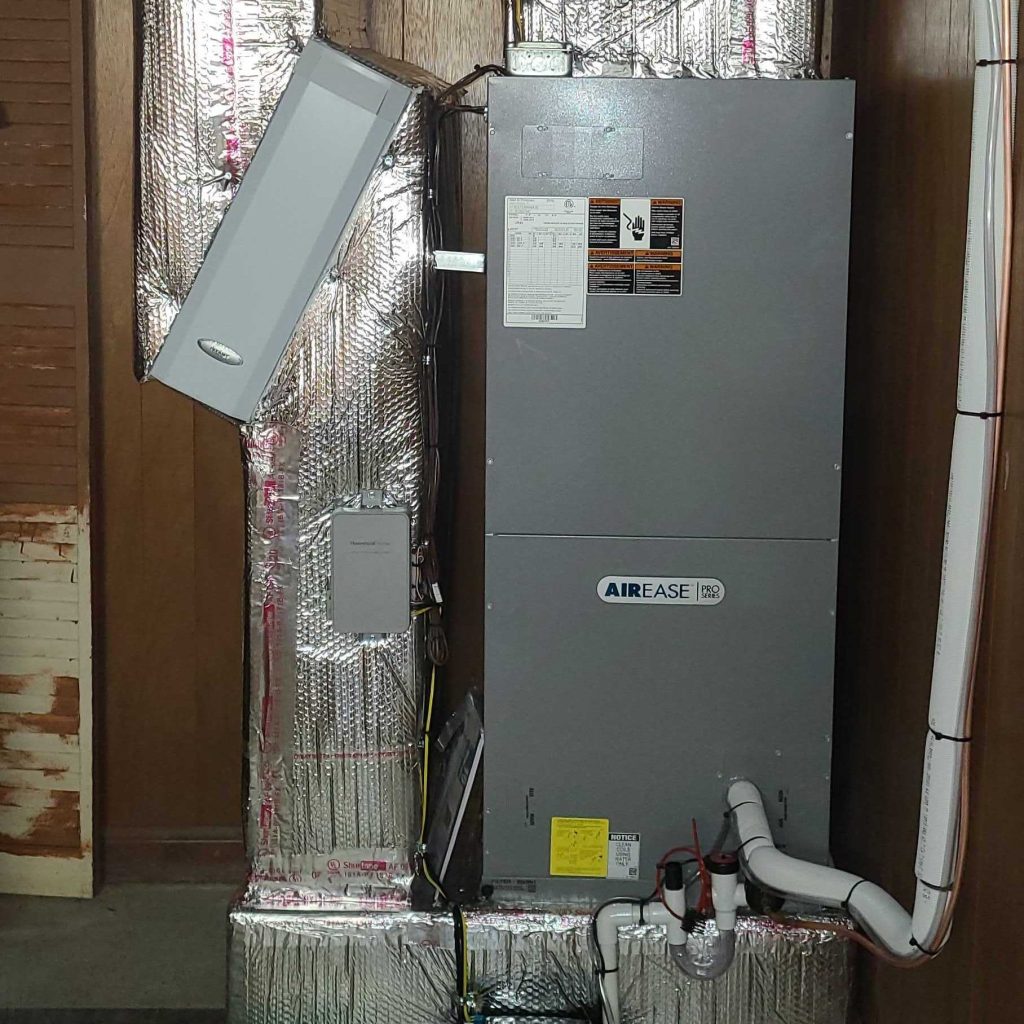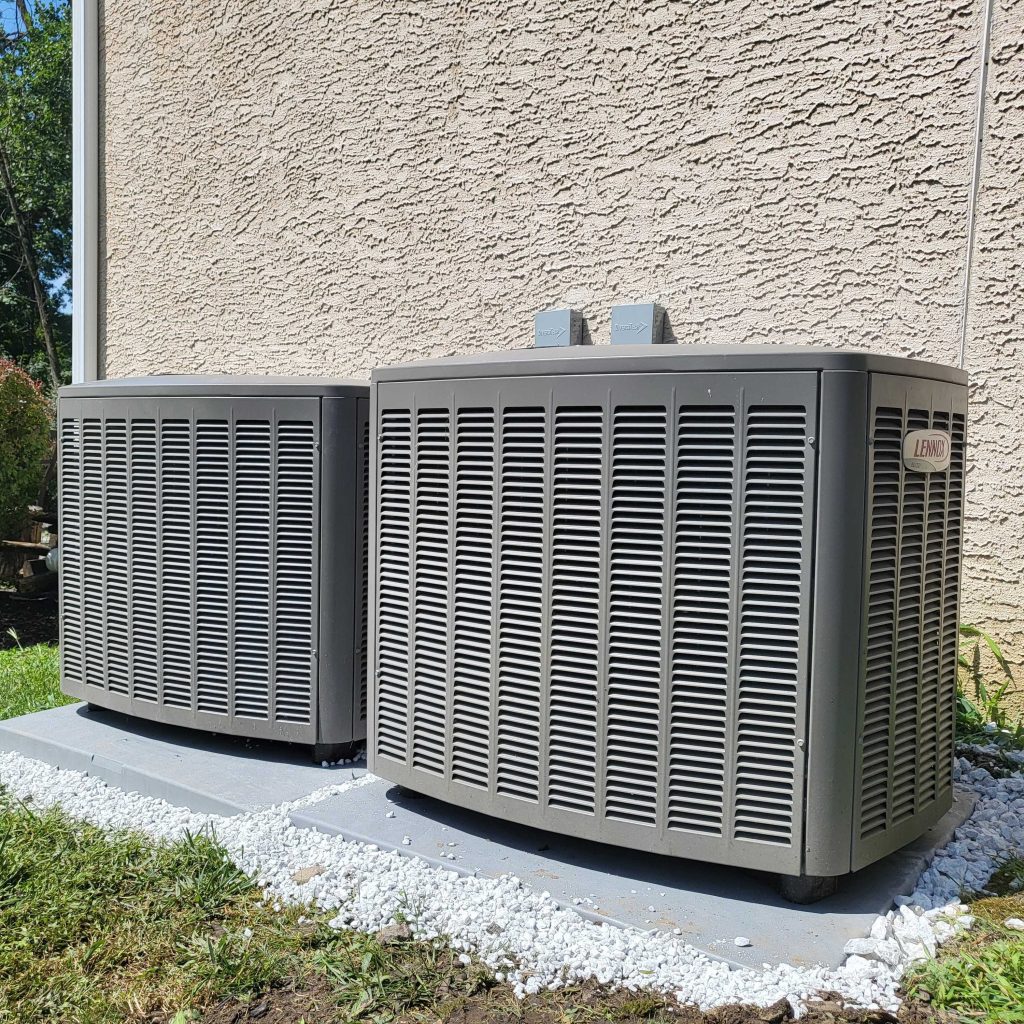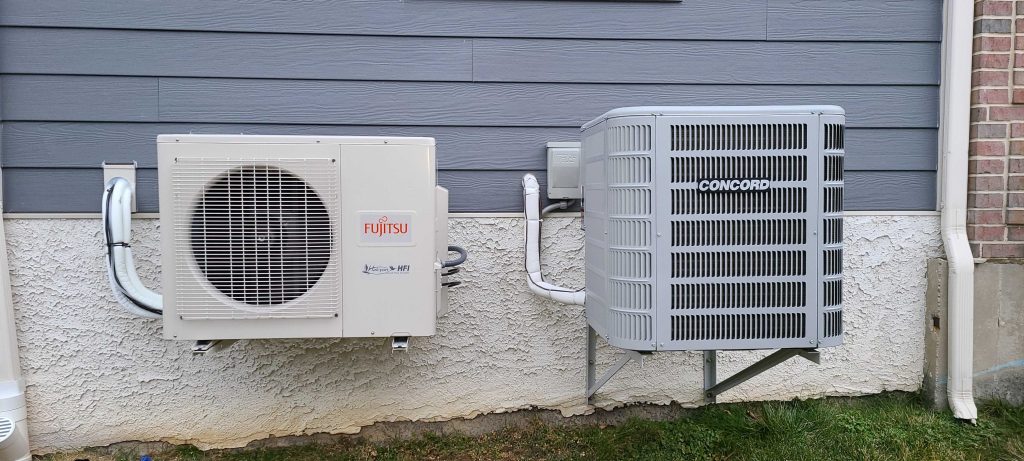In recent years, the shift towards sustainable living has seen a marked increase in the adoption of heat pumps as a primary source for heating and cooling in homes. Known for their efficiency and environmental benefits, heat pumps have emerged as a cornerstone of green building practices, offering a viable alternative to traditional fossil fuel-based systems. This surge in popularity is largely attributed to their ability to significantly reduce carbon footprints by utilizing the ambient air or ground temperature to heat and cool buildings, thus cutting down on greenhouse gas emissions and reliance on non-renewable energy sources.
Despite their growing reputation as a sustainable heating and cooling solution, heat pumps are not without their challenges. Homeowners considering the switch to a heat pump system often find themselves weighing the benefits against a set of common concerns that can impact the overall satisfaction and efficiency of their investment. Among these concerns are the heat pump’s performance in cold weather, which has historically been a point of contention due to efficiency losses at extremely low temperatures. Additionally, the initial cost of installing a heat pump system tends to be higher than that of traditional HVAC systems, making it a significant financial consideration for many.
Another notable downside is the lower vent temperature that heat pumps produce compared to conventional heating systems like furnaces. This characteristic, inherent to the operation of heat pumps, can lead to a perception of a less toasty and more drafty home environment, especially during the colder months. Homeowners might find that, although their space is adequately heated, the absence of the hot blast of air they’ve come to associate with warmth makes the environment feel cooler than it actually is. This phenomenon could prompt individuals to adjust their thermostats higher in an attempt to achieve the cozy warmth they desire, potentially offsetting some of the energy savings heat pumps are celebrated for.
As we delve deeper into the nuances of heat pump technology, it’s essential to understand these downsides in the context of the broader benefits they offer. By examining the performance in cold weather, the implications of higher installation costs, the impact of lower vent temperatures, and the potential for a draftier home environment, this guide aims to provide homeowners with a balanced perspective. This comprehensive overview will empower individuals to make informed decisions about integrating heat pumps into their sustainable living practices, ensuring they are well-equipped to navigate the complexities of modern heating and cooling solutions.

Heat Pump Technology Explained
Basic Principle of Operation
At the core of heat pump technology is a remarkably simple yet ingenious principle: transferring heat rather than generating it through combustion or electrical resistance. This process involves moving heat from a cooler area to a warmer one, making the cool space cooler and the warm space warmer. During the winter months, heat pumps extract heat from the outside air, ground, or water and transfer it inside to heat your home. Conversely, in the summer, they reverse this process, removing heat from your home and expelling it outside to cool your living space. This dual functionality makes heat pumps an exceptionally versatile solution for both heating and cooling, contributing to their popularity as a year-round, energy-efficient home comfort system.
The efficiency of a heat pump is due in large part to its reliance on heat transfer rather than heat production. It’s a well-established physical principle that moving heat is significantly more energy-efficient than creating it. As a result, heat pumps can provide the same heating or cooling output as traditional HVAC systems but use a fraction of the energy, leading to substantial savings on energy bills and a reduced environmental impact.
Types of Heat Pumps
Heat pumps are categorized based on their source of heat exchange: air, ground (geothermal), or water. Each type has its unique advantages, installation considerations, and suitability for different climates and home settings.
- Air-Source Heat Pumps: The most common type, air-source heat pumps, extract heat from the air outside to heat your home and reverse the process to cool it during warmer months. Their popularity stems from their relatively easy installation and effectiveness in a wide range of climates. However, their efficiency can diminish in extremely cold temperatures, where there is less ambient heat in the air to be captured.
- Ground-Source (Geothermal) Heat Pumps: These systems utilize the stable temperature of the earth just a few feet below the surface to exchange heat. In the winter, they absorb heat from the ground to warm the home, and in the summer, they dissipate heat back into the earth to cool it. Geothermal heat pumps are highly efficient and effective in almost any climate, including very cold areas, due to the consistent underground temperatures. The main barriers to their widespread adoption are the higher initial installation costs and the need for sufficient land to install the ground loop system.
- Water-Source Heat Pumps: Similar to geothermal systems, water-source heat pumps use bodies of water, such as lakes or wells, as a heat exchange medium. These systems are less common and require access to a suitable water source, but they offer efficiency benefits comparable to geothermal heat pumps.
For the purpose of this discussion, we will focus primarily on air-source heat pumps, as they represent the most accessible and widely used type among homeowners. Air-source heat pumps have seen significant technological advancements in recent years, improving their efficiency and making them viable options even in regions with colder climates. Innovations such as variable-speed compressors and enhanced refrigerant properties have contributed to expanding the usability of air-source heat pumps, addressing some of the traditional limitations associated with their performance in extreme temperatures.
Poor Performance in Cold Weather
One of the most cited concerns about heat pump technology, especially in regions that experience severe winters, is its diminished efficiency and performance in cold weather. The root of this issue lies in the fundamental operation of heat pumps—extracting heat from the outside air and transferring it indoors. As the temperature drops, the amount of available heat energy in the outside air decreases, making the heat extraction process more challenging and less efficient.
Why Heat Pumps Struggle in Cold Weather
- Efficiency Drop as Temperatures Fall: Heat pumps operate by absorbing external heat and compressing the refrigerant to increase its temperature, before transferring it inside the home. When outside temperatures plummet, the system must work harder to extract the diminishing heat from the air. This increased effort results in a drop in efficiency, meaning the system uses more energy to maintain a comfortable indoor temperature, diminishing the cost and environmental benefits that make heat pumps appealing.
- Technical Limitations in Extreme Cold: Traditional heat pump models, especially older designs, have a lower limit on the temperature at which they can effectively operate. In extremely cold conditions, there might not be enough heat in the outside air to be efficiently extracted. This limitation can lead to situations where the heat pump is unable to provide sufficient heating to maintain indoor comfort without supplemental heating sources.
Advancements Mitigating Cold Weather Performance Issues
Despite these challenges, significant advancements in heat pump technology have been made to address and mitigate performance issues in cold weather:
- Inverter-Driven Compressors: Modern heat pumps equipped with inverter technology allow the compressor to vary its speed dynamically, rather than operating at full power or not at all. This adaptability means the system can adjust its output to match the heating demand more precisely, improving efficiency and maintaining better performance even in lower temperatures. Inverter-driven compressors can maintain a significant portion of their heating capacity at much lower temperatures than their non-inverter counterparts.
- Variable-Speed Technology: Similar to inverter-driven compressors, variable-speed technology allows the heat pump’s fans and other components to adjust their speed based on the current heating or cooling needs. This results in reduced energy consumption and more consistent indoor temperatures, further enhancing the system’s efficiency in cold weather.
- Hybrid Systems with Auxiliary Heating: For climates where temperatures frequently drop below the effective range of even the most advanced heat pumps, hybrid systems offer a solution. These systems combine a heat pump with an auxiliary heating source, such as a gas furnace or electric heating elements, that kicks in only when the temperature falls beyond the heat pump’s efficient operating range. This approach ensures comfort during the coldest months while still maximizing the efficiency and environmental benefits of the heat pump during milder conditions.
These technological improvements have significantly expanded the viability of heat pumps in colder climates, addressing one of the primary concerns that have historically limited their adoption. Homeowners in regions with harsh winters can now consider heat pumps a feasible and efficient option for their heating needs, thanks to innovations that enhance cold-weather performance.
Higher Installed Costs
While heat pumps are celebrated for their efficiency and environmental benefits, one of the initial hurdles for many homeowners is the higher upfront cost compared to traditional heating systems such as furnaces and boilers. Understanding these cost differences, the factors that contribute to them, and the long-term financial perspective is crucial for making an informed decision.
Initial Cost Comparison
- Heat Pumps vs. Traditional Heating Systems: On the surface, the installation cost of a heat pump system is often higher than that of conventional heating systems. For example, while a new furnace or boiler might range from a few thousand dollars to upwards of $5,000-$10,000 depending on the system’s size and complexity, a heat pump system’s price can start higher and increase based on various factors including type, size, and installation requirements. This initial price difference primarily stems from the heat pump’s dual functionality—providing both heating and cooling—which requires more sophisticated technology and components.
Factors Contributing to Higher Costs
- Specialized Equipment: Heat pumps utilize advanced technology to transfer heat efficiently from one place to another. This includes inverter-driven compressors, variable-speed fans, and other components that contribute to their higher efficiency and performance but also add to the cost.
- Installation Complexities: The installation of a heat pump, especially ground-source (geothermal) systems, can be more complex and labor-intensive. For air-source heat pumps, modifications may be needed to existing ductwork or electrical systems to accommodate the new system. Ground-source systems require significant excavation to install the underground piping, significantly increasing installation costs.
- Size and Capacity: Heat pumps must be correctly sized to efficiently heat and cool a home. This sizing involves detailed calculations considering the home’s insulation, air leakage, and other factors. Incorrectly sized equipment can lead to higher operational costs and reduced comfort.
Long-term Perspective on Cost-effectiveness
Despite the higher initial costs, the long-term financial outlook for heat pumps is more favorable when considering the total cost of ownership, which includes operating, maintenance, and potential replacement costs over the system’s lifespan.
- Energy Savings: Heat pumps are significantly more efficient than traditional heating systems, leading to lower monthly energy bills. These savings can offset the higher upfront cost over time, especially in climates with extreme weather conditions where heat pumps can operate most efficiently.
- Government Incentives: Recognizing the environmental and energy-saving benefits of heat pumps, various government programs offer incentives to reduce the upfront cost. For instance, the Inflation Reduction Act includes provisions for heat pump rebates and tax credits, making them more accessible to a broader range of homeowners. These incentives can significantly reduce the initial investment, shortening the payback period and increasing the overall value of installing a heat pump.
- Environmental Impact: While not a direct financial benefit, the reduced environmental impact of heat pumps through lower greenhouse gas emissions and decreased fossil fuel dependency contributes to a broader societal benefit. This aspect, while harder to quantify in dollar terms, aligns with the growing consumer preference for sustainable and environmentally friendly home heating and cooling solutions.
In conclusion, while the higher installed costs of heat pumps can be a deterrent, it’s essential to consider the broader picture. The long-term energy savings, coupled with government incentives, can make heat pumps a financially viable option over the life of the system. Homeowners interested in heat pumps should consult with HVAC professionals, like those at McGinley Services, to understand the specific costs and benefits related to their home and circumstances, ensuring they make the most informed decision possible.
The Drafty Home Perception
A common perception among some homeowners using heat pumps is a sensation of draftiness, especially during the colder months. This feeling can often be attributed to the lower air temperatures heat pumps deliver compared to traditional heating systems. Understanding the dynamics of this perception, and how to mitigate it, is essential for maintaining comfort while benefiting from the energy efficiency of heat pumps.
Lower Air Temperatures and Draftiness
- Heat Pump Air Temperatures: Heat pumps typically deliver air at lower temperatures (around 90-120°F) compared to the hotter air (upwards of 130-140°F) produced by combustion-based heating systems like furnaces. While these lower temperatures are still sufficient to warm a room effectively, the milder warm air can sometimes feel cooler, especially when blowing directly on skin. This sensation is often mistaken for draftiness, even in well-insulated homes.
- Adding a Humidifier: One way to combat the perception of draftiness and enhance comfort is by integrating a humidifier with the heat pump system. Humidity plays a crucial role in how we perceive warmth; air with higher humidity feels warmer than dry air at the same temperature. By maintaining optimal humidity levels, homeowners can alleviate the sensation of coolness and create a more comfortable living environment.
Air Movement and Distribution
- Comparative Dynamics: The method of air distribution and movement also contributes to the perceived difference in comfort between heat pumps and traditional heating systems. Heat pumps often run for longer cycles at lower capacities, especially those with inverter-driven compressors, to maintain consistent temperatures. This continuous air movement can be perceived differently from the intermittent blasts of hot air from traditional systems, which quickly raise the temperature before shutting off.
- Ensuring Proper Distribution: Properly designed and installed ductwork is essential for maximizing the efficiency and comfort of heat pump systems. Strategic placement of vents and returns, along with the use of variable-speed fans, can help ensure that air is distributed evenly throughout the home, reducing cold spots and the perception of draftiness.
Improving Home Insulation and Sealing Leaks
- Enhancing Overall Efficiency: One of the most effective ways to mitigate drafty conditions and improve the efficiency of any heating system, including heat pumps, is by improving home insulation and sealing leaks. Adequate insulation helps retain heat within the home, reducing the workload on the heat pump and minimizing the feeling of drafts caused by air leakage.
- Sealing Leaks: Identifying and sealing leaks around doors, windows, and other areas where outside air can enter is crucial. These drafts not only contribute to the sensation of a colder environment but also force the heating system to work harder, increasing energy consumption and costs.
- Professional Energy Audit: For homeowners experiencing draftiness or concerned about their home’s insulation, a professional energy audit can be invaluable. An audit can pinpoint specific areas where improvements can be made, from adding insulation to sealing leaks, and recommend the most effective solutions to enhance comfort and efficiency.



Mitigating the Downsides
While heat pumps present certain challenges, particularly in cold climates, advancements in technology and proper planning can significantly mitigate these issues. Homeowners can enjoy the benefits of heat pumps, such as energy efficiency and reduced carbon emissions, without compromising on comfort. Here are strategies to overcome the common challenges associated with heat pumps.
Selecting High-Efficiency Models
- Better Cold Weather Performance: Modern heat pumps are designed to operate efficiently even in cold climates. When selecting a heat pump, look for models with high Seasonal Energy Efficiency Ratio 2 (SEER2) and Heating Seasonal Performance Factor 2 (HSPF2) ratings. These ratings are indicators of the unit’s efficiency in cooling and heating modes, respectively. Models designed for cold weather performance often feature enhanced components and technology that enable them to extract heat from the air efficiently, even at very low temperatures.
- Inverter Technology: Opt for heat pumps equipped with inverter technology. These systems can adjust their operating speed to match the heating or cooling demand, reducing energy consumption and maintaining more consistent indoor temperatures. Inverter-driven compressors are particularly effective in cold weather, as they can operate efficiently over a wider range of temperatures.
Professional Installation and Maintenance
- Professional Installation: Proper installation is crucial for the optimal operation of heat pumps. It’s essential to work with a qualified HVAC professional who can assess your home’s heating and cooling needs, ensure the heat pump is correctly sized, and install it according to the manufacturer’s specifications. Incorrect installation can lead to inefficient operation, increased energy consumption, and comfort issues.
- Regular Maintenance: Regular maintenance is key to sustaining the efficiency and longevity of your heat pump. Annual check-ups by a professional can help identify and rectify any issues before they lead to more significant problems. Homeowners should also regularly clean or replace filters and keep the outdoor unit free from debris to ensure unobstructed airflow.
Technological Advancements and Future Trends
- Continuous Improvements: The heat pump industry is continuously evolving, with manufacturers investing in research and development to overcome existing limitations. This includes efforts to enhance cold weather performance, increase efficiency, and reduce installation costs. For example, developments in low-Global Warming Potential (GWP) refrigerants are making heat pumps more environmentally friendly.
- Hybrid Systems: Hybrid heat pump systems, which combine a heat pump with a gas furnace or electric resistance heater, are becoming an attractive option for homeowners in extremely cold climates. These systems use the heat pump as the primary heating source but switch to the auxiliary heater in extreme conditions, ensuring comfort without sacrificing efficiency.
- Smart Technology Integration: The integration of smart technology with heat pump systems is on the rise. Smart thermostats and home automation systems can optimize heating and cooling schedules based on usage patterns, weather forecasts, and real-time energy prices, further enhancing efficiency and reducing operating costs.
Conclusion
Heat pumps stand out as a pivotal solution in the transition towards more sustainable and energy-efficient home heating and cooling. However, as with any technology, they come with their set of challenges, particularly when it comes to performance in cold weather, higher upfront costs, the perception of a draftier home environment due to lower vent temperatures, and the complexities involved in their installation and maintenance. Despite these concerns, the long-term benefits of heat pumps—such as significant energy savings, reduced carbon footprint, and the versatility of providing both heating and cooling—cannot be overstated.
The advancement in heat pump technology, especially with the advent of high-efficiency models boasting improved SEER2 and HSPF2 ratings, inverter-driven compressors, and hybrid systems, has addressed many of the initial drawbacks. These innovations ensure that heat pumps are now a viable option for a broader range of climates, including those with harsh winters, thereby expanding their applicability and appeal.
For homeowners considering a transition to or the installation of a heat pump system, it’s crucial to weigh both the short-term downsides and the long-term advantages. The initial investment and adaptation to the different heating experience should be measured against the backdrop of eventual energy cost savings, comfort level improvements, and environmental benefits.
We encourage homeowners to engage with HVAC professionals who can offer personalized advice tailored to their specific home needs and local climate conditions. Consulting with experts like McGinley Services not only ensures that you choose the most appropriate and efficient heat pump system for your home but also guarantees professional installation and maintenance services. These steps are vital for optimizing the operation of your heat pump, ensuring it delivers on its promise of efficiency and comfort.
The journey towards a more sustainable and energy-efficient home is a significant undertaking, and the decision to install a heat pump should be made with a comprehensive understanding of both its potential challenges and benefits. By taking the time to consult with seasoned professionals, you can make an informed decision that aligns with your long-term home comfort and energy-saving goals. McGinley Services is here to guide you through every step of this journey, ensuring that your transition to heat pump technology is as smooth and beneficial as possible.